Working With Fungi
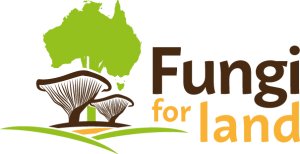
What NOT to do

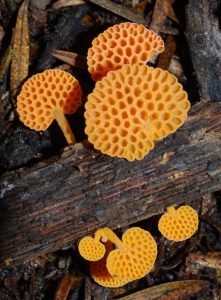
Orange Ping Pong Bats (Favolaschia claudopus, previously F. calocera ) © Copyright 2009 Michael Wallace
Do not spread problem fungi! Like other species of exotic organisms which have been introduced to Australia, there are invasive species of fungi. Therefore, we all need to use good hygiene when in the bush. Some fungi can cause disease or outcompete native fungal species so it is important not to spread them inadvertently.
Do not collect soil from healthy natural woodlands with a shovel, in a front-end loader, or by any other means. This is likely to cause damage to the precious remnants, including disruption of soil communities their structure, and the root and fungal networks. It may also transfer pest and problem species which may hamper revegetation efforts.
Do not use excessive mulch. Mulch is a simplified substrate that creates a low-diversity environment dominated by generalist species. It also encourages the spread of invasive species, the spores of which are frequently found on mulching equipment. Deep and repeated mulching can suppress ectomycorrhizal fungi that partner with trees and shrubs.
Method for restoring fungi using
puffballs
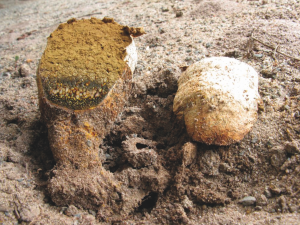
The method is suitable for nursery-raised seedlings to be planted in new or established revegetation areas.
STILL TO COME: Truffles and Mushrooms
Download instructions:
Methods will be updated…
We want to to continue to develop our understanding. So please share your experiences & help everyone learn to restore fungi and their important functions in our landscapes.
We welcome your feedback, your ideas and comments and will endeavour to answer any questions you may have. Please share your stories and photos of your use of fungi in bush restoration and revegetation. The sharing of our experiences and ideas will improve the methods best suited to our many different bioregions.
With your help these methods will be updated as new information comes to hand.
Choosing Native Fungi
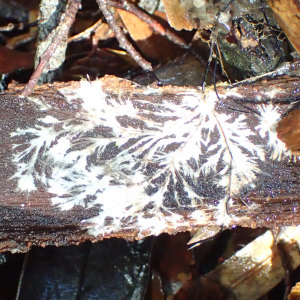
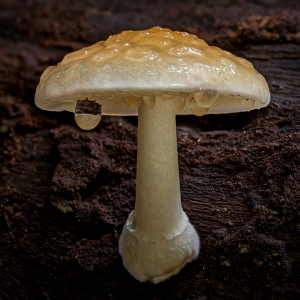

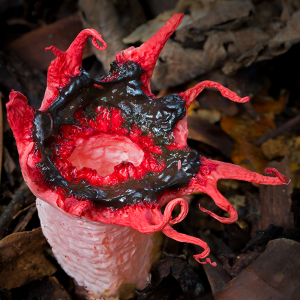
© Paul Vallier
As a basic rule, we suggest that you try any or many different local fungi that are NOT weedy, pest or problem fungi. If any indigenous recycler, mycorrhizal, endophytic or beneficial fungi establish in revegetation, then you have succeeded. The activities of these local fungi will contribute to a gradual shift in the revegetation from a soil environment alien to native fungi to one which should encourage self-colonization of many other native fungi from nearby bushlands. ‘Alien’ or exotic and cosmopolitan fungi are more common in highly managed environments.
Revegetation programs may choose to source and re-introduce a broad range of local fungi, including common species, as well as some rare and endangered fungi. Know your local weedy or problematic species and take care NOT to spread them.
Some practitioners may choose to include certain native fungi which have “weed-like” attributes, enabling them to thrive in soil recently held under crops or grazing, as a stage in restoration. Knowing problem species is critically important as low diversity communities are more vulnerable. It would be best to choose a selection of fungi representing different ecological types – decomposer (recycling), mycorrhizal, endophytes etc.
Choose local fungi, as these are suited to local conditions and best match indigenous vegetation. Variations in topographical, geological, soil and vegetation conditions within remnant patches of woodland greatly influence the types and diversity of fungi. For example, sites with thickets of sheoaks and wattles in heavier soils tend to have different suites of fungi to those found in sandier soil types with heath-dominated vegetation nearby.
More informed choices of fungi will be made when one is armed with an ability to recognize different types of fungi, their roles in the environment and how they propagate.
The CSIRO FungiBank Project

Between 2003 and 2015, CSIRO Forestry and Forest Products hosted a website called FungiBank, which aimed to encourage and teach people to find and recognise many species of fungi and to use them efficiently and responsibly in management and restoration of landscapes.
Much of the material on this page is adapted from the FungiBank website, a copy of which can be viewed here.
© Copyright CSIRO Australia
The Process
© Copyright CSIRO Australia
This PDF shows an overview of the process.

Fungi4Land, Sapphire McMullan-Fisher, and this sites co-creators provide the information published and stored on this website and publications in good faith. While we take every care to ensure the accuracy of the works we publish, based on available science, and will under no circumstances be liable for the accuracy of the information published on this website. The information provided is general information only. Thus we will not be liable for damages of any kind, including (but not limited to) compensatory damages, lost profits, lost data, or any form of special, incidental, indirect, consequential or punitive damages of any kind, whether based on breach of contract or negligence or use of this website and its works.